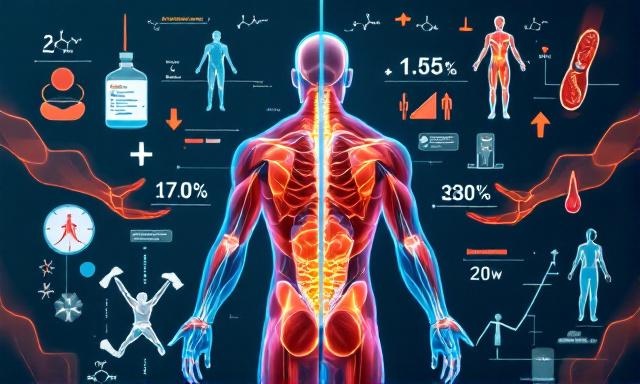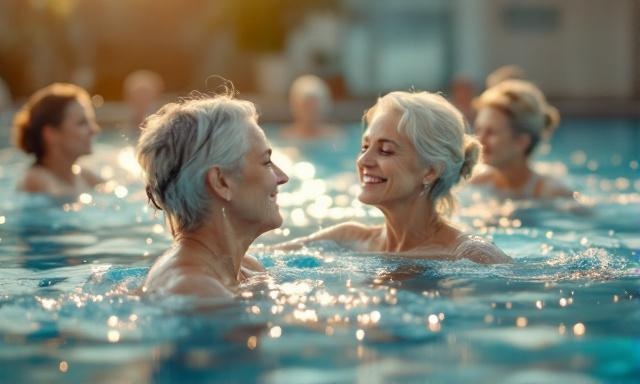
Exercise as Therapy
Movement Tailored to Health Needs
Understanding Exercise as Medicine

As someone who's experienced the transformative power of movement firsthand, I
can tell you that exercise does more than just keep us fit. Our bodies are
designed to move, and regular physical activity influences everything from our
cardiovascular health to our immune system function. When we exercise, our
bodies release natural chemicals that help repair tissues, strengthen muscles,
and maintain healthy bone density.
The therapeutic effects of exercise are backed by countless scientific studies
that reveal fascinating insights about our bodies. When we move, our brains
produce endorphins and other feel-good chemicals that act as natural painkillers
and mood elevators. Additionally, exercise increases blood flow throughout our
body, delivering vital nutrients to our organs and promoting cellular repair
processes.
There's a wide variety of therapeutic exercise approaches available to us today.
These include gentle practices like yoga and tai chi that focus on mindful
movement and breathing, water-based exercises that reduce joint stress while
building strength, and specialized physical therapy exercises designed to target
specific health conditions. Each approach offers unique benefits and can be
adapted to individual needs.
Tailoring Movement to Your Needs

Understanding your body's specific needs is the first step in developing an
effective exercise routine. I always recommend starting by assessing your
current fitness level, any physical limitations, and your health goals. This
might involve consulting with healthcare providers, noting which movements cause
discomfort, and identifying activities that make you feel energized.
Once you understand your body's needs, you can select exercises that address
your specific health concerns. For example, if you're dealing with lower back
pain, exercises that strengthen core muscles and improve posture might be most
beneficial. Those managing diabetes might focus on a combination of cardio and
strength training to help regulate blood sugar levels.
Creating a sustainable exercise routine requires careful consideration of your
lifestyle and preferences. I've found that the most successful programs are
those that fit naturally into your daily schedule and include activities you
genuinely enjoy. Start with manageable goals and gradually increase intensity
and duration as your body adapts to the new routine.
Mental Health Benefits
Exercise has proven to be one of the most effective natural stress relievers
available to us. When I engage in physical activity, my body naturally reduces
levels of stress hormones like cortisol and adrenaline. Regular exercise also
helps train our bodies to handle stress more effectively, making us more
resilient to daily pressures and anxiety-inducing situations.
Through consistent physical activity, we naturally build confidence in our
abilities and our body image. As we master new movements and achieve fitness
goals, no matter how small, our self-esteem grows. This improved confidence
often extends beyond our workout sessions, positively impacting other areas of
our lives and relationships.
The connection between regular exercise and better sleep quality is remarkable.
Physical activity helps regulate our circadian rhythm, making it easier to fall
asleep and stay asleep throughout the night. Regular movement also contributes
to improved mood stability throughout the day, helping us maintain a more
positive outlook and better emotional balance.
Gentle Approaches to Movement

Low-impact exercises are essential for maintaining joint health while avoiding
unnecessary stress on our bodies. Activities like swimming, walking, and
stationary cycling provide excellent cardiovascular benefits without putting
excessive pressure on our joints. These exercises allow us to stay active while
protecting our body's natural cushioning and support systems.
Every exercise can be modified to accommodate different fitness levels and
physical limitations. I often show my friends how traditional exercises can be
adapted using props, changing positions, or adjusting the range of motion. These
modifications ensure that everyone can participate in physical activity safely
and effectively, regardless of their current fitness level.
Building strength and flexibility requires a gradual, systematic approach.
Starting with basic movements and slowly progressing to more challenging
variations allows our bodies to adapt safely. This progressive approach helps
prevent injury while steadily improving our physical capabilities, making our
fitness journey both safer and more successful.
Making Exercise a Lifestyle

The key to maintaining a consistent exercise routine is creating a realistic
schedule that works with your life. I always emphasize the importance of being
honest about your available time and energy levels. Setting aside specific times
for movement, even if just 15-20 minutes, helps establish exercise as a regular
part of your daily routine.
Finding joy in movement is crucial for long-term exercise success. This might
mean trying different activities until you discover what truly excites you,
whether it's dancing, hiking, swimming, or playing sports. When we genuinely
enjoy our chosen form of exercise, it transforms from a chore into something we
look forward to doing.
Building a supportive exercise community can make a huge difference in
maintaining motivation and accountability. This might include joining fitness
classes, finding a workout buddy, or connecting with online exercise groups.
Having others to share your journey with provides encouragement, helpful tips,
and meaningful connections that make exercise more enjoyable and sustainable.
